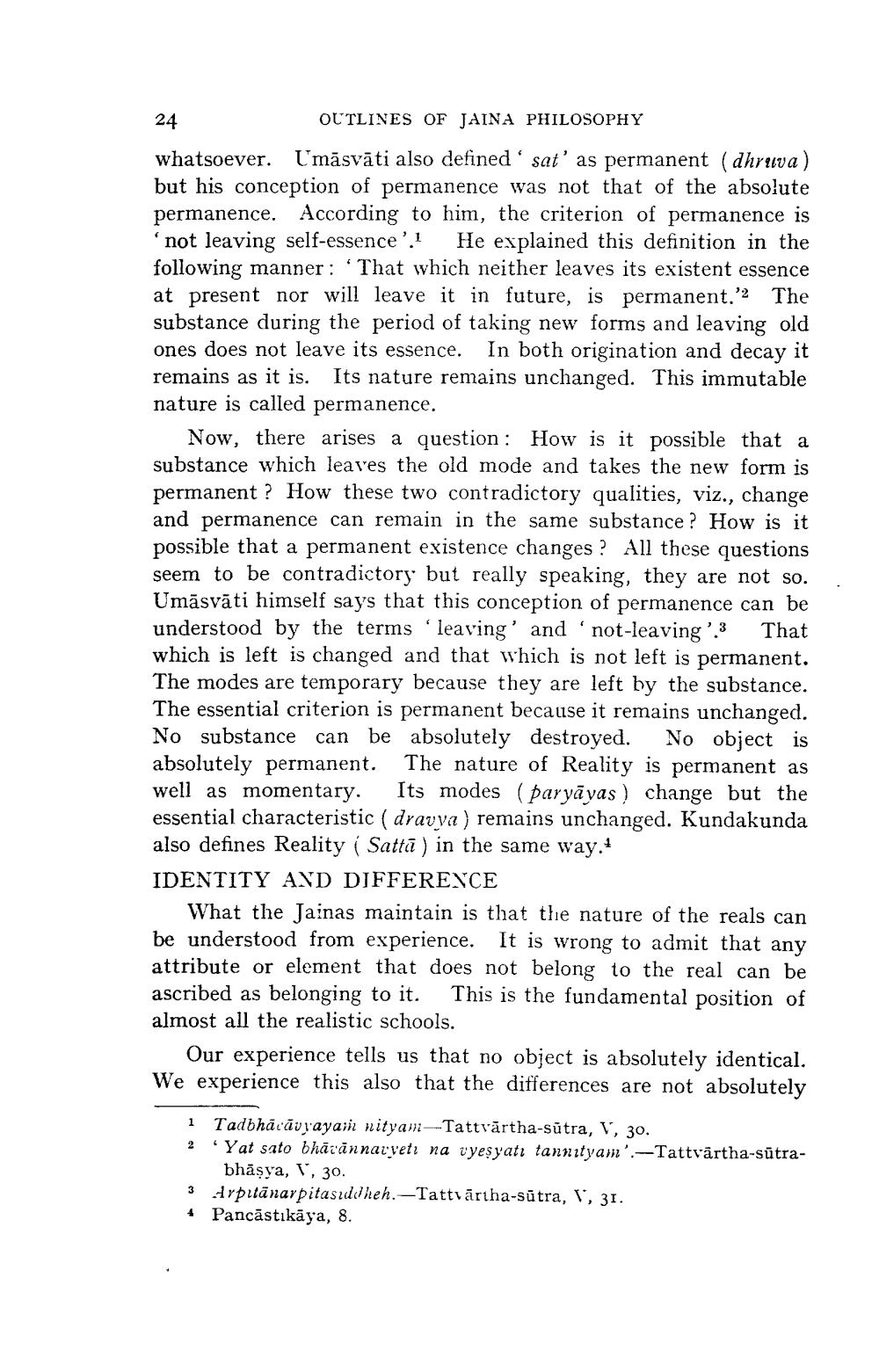________________
24
OUTLINES OF JAINA PHILOSOPHY whatsoever. I'māsvāti also defined' sat' as permanent (dhruva) but his conception of permanence was not that of the absolute permanence. According to him, the criterion of permanence is 'not leaving self-essence'. He explained this definition in the following manner : That which neither leaves its existent essence at present nor will leave it in future, is permanent.' The substance during the period of taking new forms and leaving old ones does not leave its essence. In both origination and decay it remains as it is. Its nature remains unchanged. This immutable nature is called permanence.
Now, there arises a question: How is it possible that a substance which leaves the old mode and takes the new form is permanent ? How these two contradictory qualities, viz., change and permanence can remain in the same substance ? How is it possible that a permanent existence changes ? All these questions seem to be contradictory but really speaking, they are not so. Umāsvāti himself says that this conception of permanence can be understood by the terms leaving' and 'not-leaving'3 That which is left is changed and that which is not left is permanent. The modes are temporary because they are left by the substance.
e essential criterion is permanent because it remains unchanged. No substance can be absolutely destroyed. No object is absolutely permanent. The nature of Reality is permanent as well as momentary. Its modes (paryāyas) change but the essential characteristic (dravva) remains unchanged. Kundakunda also defines Reality ( Sattā) in the same way. IDENTITY AND DIFFERENCE
What the Jainas maintain is that the nature of the reals can be understood from experience. It is wrong to admit that any attribute or element that does not belong to the real can be ascribed as belonging to it. This is the fundamental position of almost all the realistic schools.
Our experience tells us that no object is absolutely identical. We experience this also that the differences are not absolutely
1 Tadbhācāvvayaii nityam-Tattvārtha-sútra, V, 30. 2 'Yat sato bhātānnarveti na vyeşyatı tannityam'.-Tattvärtha-sūtra
bhāşya, 1, 30. 3 Arpitānarpitasıdtheh. -Tattvārtha-sútra, 1, 31. 4 Pancāstıkāya, 8.




